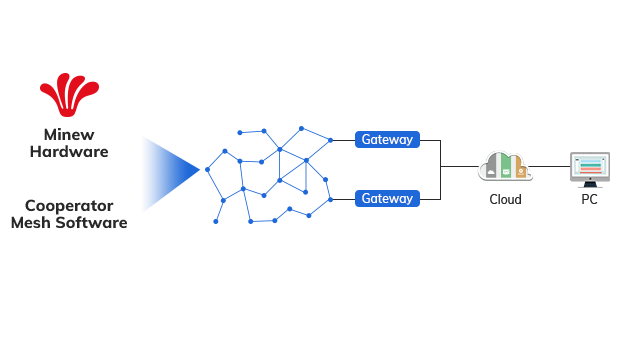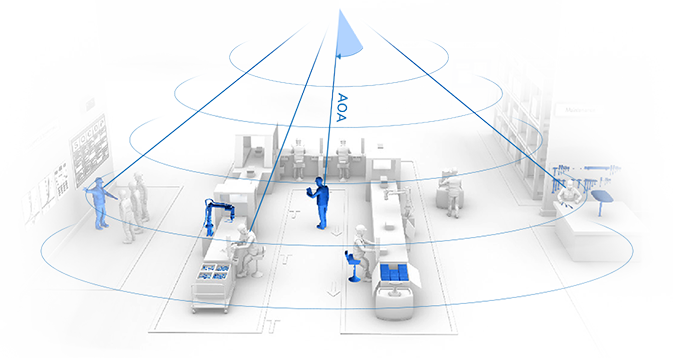
AoA RTLS
Angle of Arrival (AoA) positioning algorithm improves the accuracy of traditional low-precision Bluetooth by ten times, reaching 0.5-1 meter average accuracy. It's a typical ranging-based algorithm across some devices to sense the arrival direction of the transmitting node signal, calculate the relative position or angle between the unknown node and the anchor node, then use triangulation or other methods to calculate the location of the unknown node.
Typical Use Cases




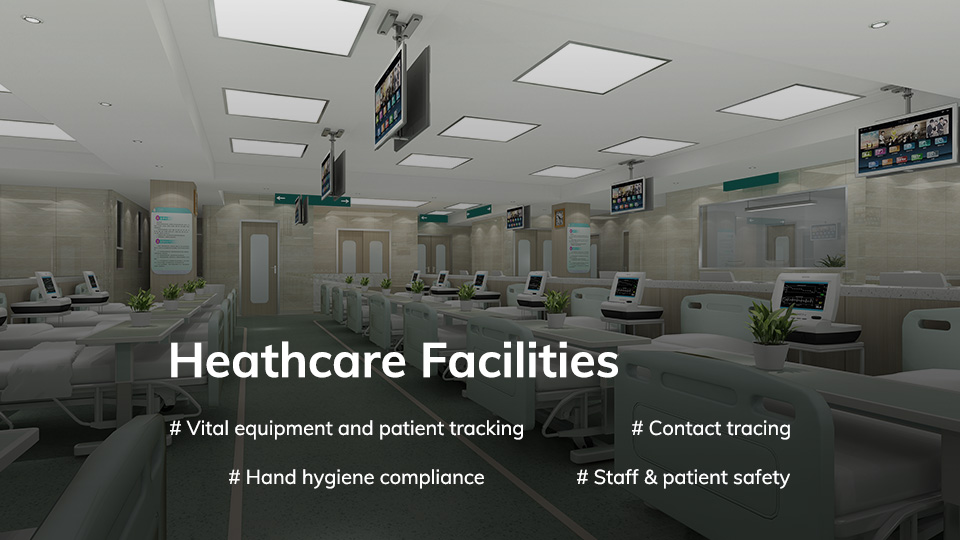
What Can Our Partners Benefit from the products based on AoA RTLS?
AoA, a new technology and a thrilling part of the BLE 5.1 update, boosts efficiency, productivity and safety in every industry that you can think of.
Sub-meter Accuracy
Enable various vertical industries to get more accurate data, improve work efficiency and reduce loss.
Low latency
Real-time updates allow making response strategies to prevent losses caused by time differences.
High integration
With high compatibility and scalability, it can be integrated into existing infrastructure and systems to cut down costs.
Low consumption
With the BLE beacons, it ensures the long duration of the products that bring the users a considerable budget statement.
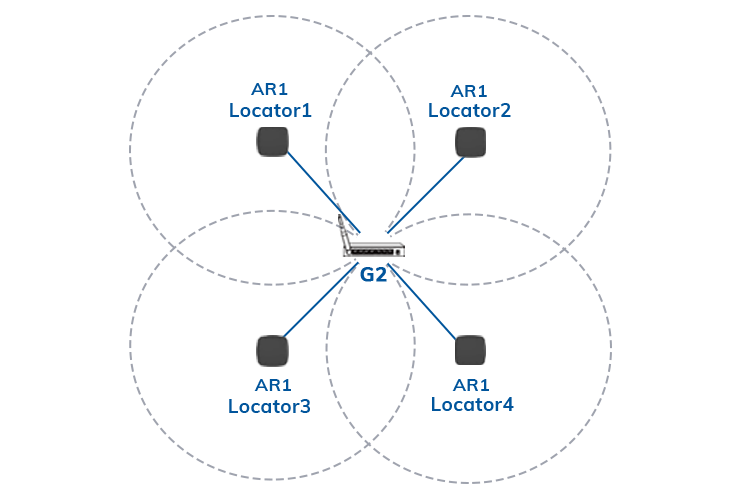
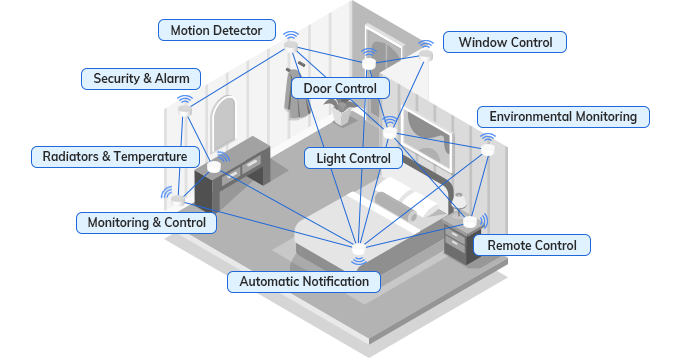
Wireless Sensor Network
Wireless sensor network (WSN) is composed of a few to hundreds or thousands of nodes — spatially dispersed and dedicated sensors — that monitor and record the physical conditions of the environment and forward the collected data to a central location. WSN can measure environmental conditions such as temperature, sound, pollution levels, humidity and wind. The topology of a WSN can vary from a simple star network to an advanced multi-hop wireless mesh network based on the actual use cases. WSN can be widely used in industrial and consumer applications, sensing for data.
Typical Use Cases

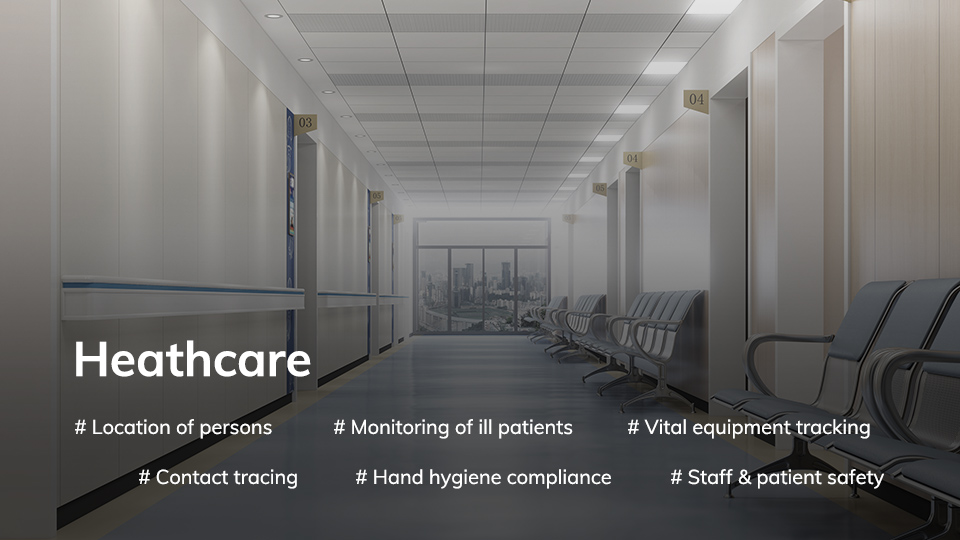


Key Features
Integrate everything into the WSN, sensing and collecting data to innovate production and life.
Low energy consumption
Nodes to be used are mostly using industrial batter and low energy consumption chipset.
High resilience
Ability to cope with node failures.
Strong mobility
Strong mobility of nodes increases the number of applications such as autonomous vehicles.
High scalability
Allow you quickly and easily change the size of the network, extremely adaptable and expandable.
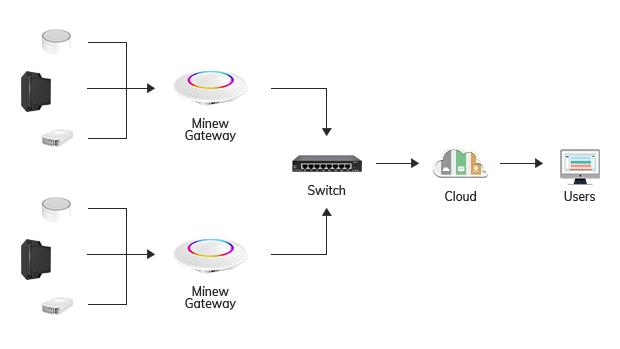

MESH Compatibility
A mesh network (or simply mesh net) is a local network topology in which the infrastructure nodes (i.e. bridges, switches, and other infrastructure devices) connect directly, dynamically and non-hierarchically to as many other nodes as possible and cooperate with one another to efficiently route data from/to clients. Mesh networks connect the infrastructure nodes in an easy, effective and wireless way, using inexpensive, existing technology. It makes every object into IoT become possible.
Typical Use Cases



Why do Our Partners Choose our products that are compatible with MESH?
MESH networking, scalable and cost-effective, constructing a cableless infrastructure for asset tracking.
Cost Effective
Fewer wires in large areas of coverage can save more costs.
Faster Connection & Running
The more nodes you install, the bigger and faster your wireless network becomes.
High Reliability
When wireless signals are intermittently blocked, the mesh network will adjust to find a clear signal.
Easy Scalability
No additional routers required. Instead, each node acts as a router.
